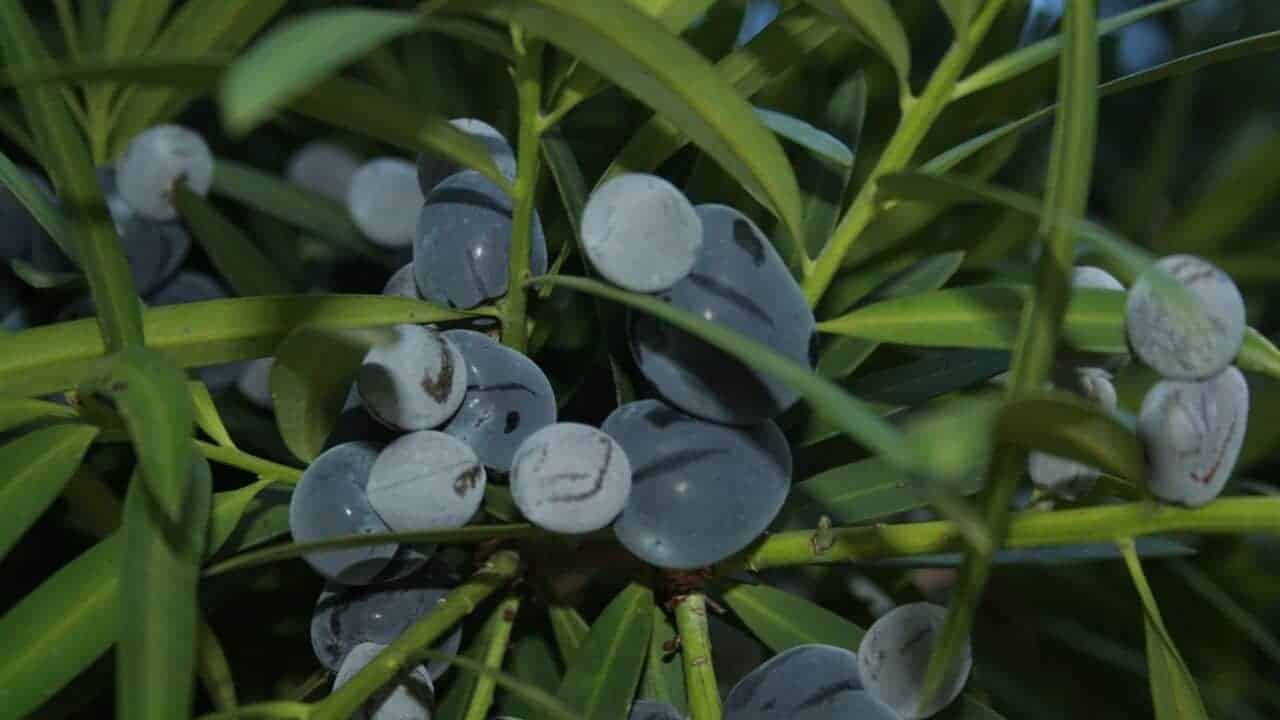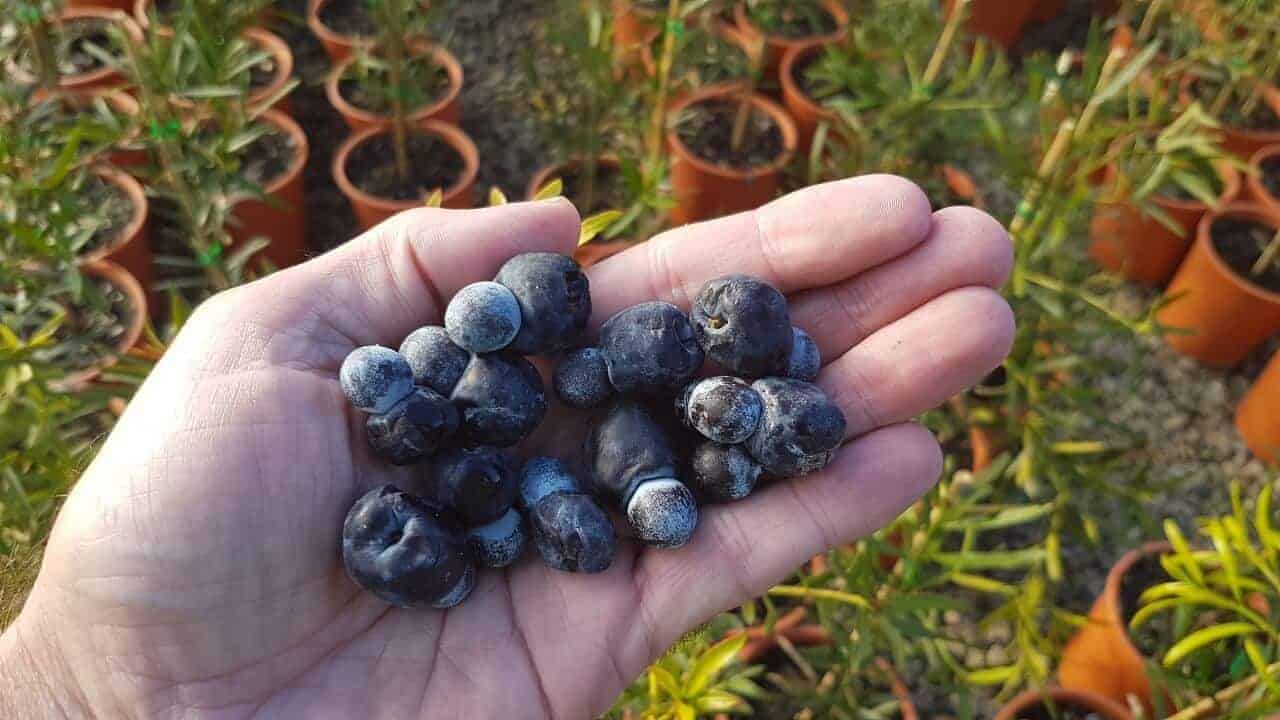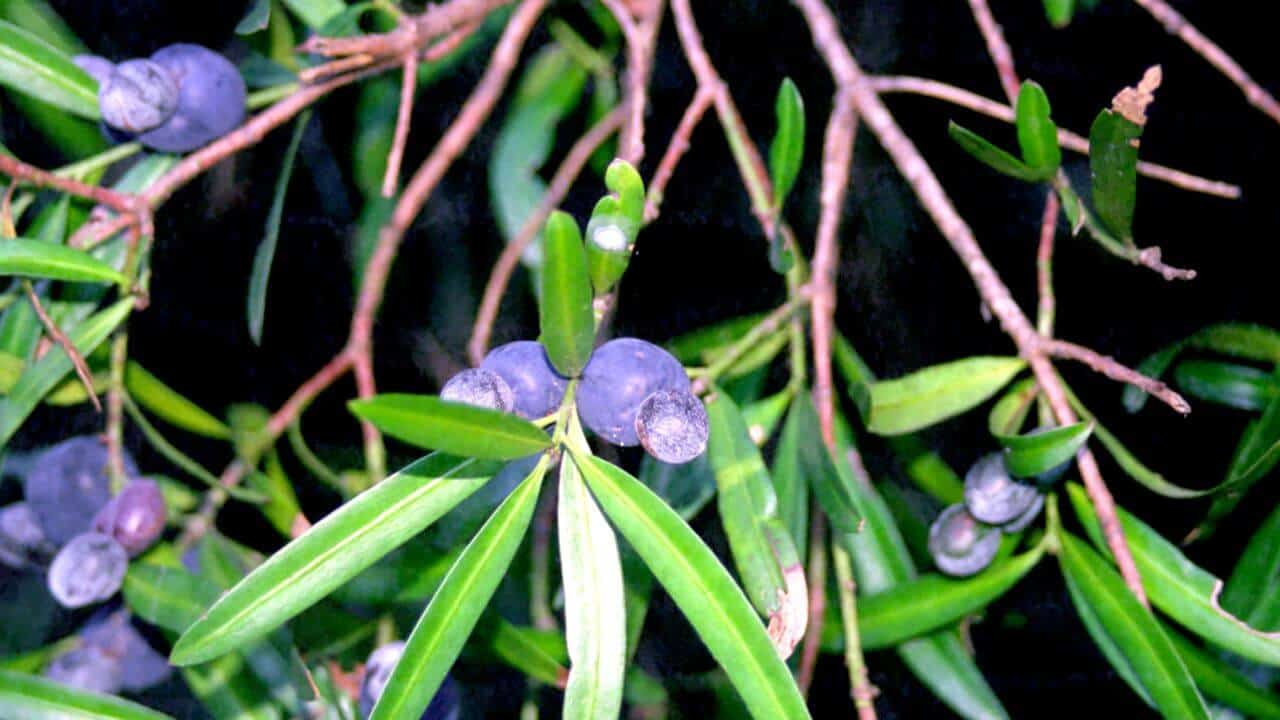Illawarra Plum
Podocarpus elatus
Illawarra Plum is also known as the Daalgaal, Goongum or Plum Pine. Its juicy, pulpy fruits have a grape-like texture and sweetish, mild pine flavour that is enhanced by cooking. In NSW, Illawarra Plum was regarded as one of the best bush foods by both Aboriginal people and European colonists. This tree is a common rainforest species endemic to the east coast of Australia.
Illawarra Plum fruits are made up of two segments – a hard inedible seed (1cm in diameter), and a large, fleshy purple-black berry (2.5cm in diameter). They ripen between March and July, and may be eaten raw or made into a jam or jelly. They’re often used as a compliment for chilli, garlic, sauces and marinades, and are especially popular in sauces, preserves, muffins, cheesecakes and fruit compotes. When cooking with Illawarra Plums, stainless steel utensils are recommended over aluminium to prevent bitterness.
Fruits may be picked from the tree, but will also fall to the ground when ripe. This species is dioecious, meaning you’ll need both male and female trees to produce fruit. To increase your chances of pollination, best planting several plants or use as a hedge. Better still, team up with your neighbours or plant as street trees.
Illawarra Plum will grow readily in both full sun and part shade. It prefers a rich, moist, non-alkaline soil, but will tolerate a range of soil types, and must have adequate drainage. This tree is resistant to salt spray, making it suitable for coastal conditions. Leaves are shiny, narrow, tough and dark green with sharp tips.
A slow growing tree, the Illawarra Plum may be kept in pots and pruned to maintain size. If allowed to grow, it can reach 8 – 12m in height.
Aboriginal name(s):
- Daalgaal
- Goongum
- Gidneywallum
Add small amounts of organic fertiliser when new growth appears between late winter and spring.
How often do I prune an Illawarra Plum tree?
As this tree is slow growing, you can get away with leaving it unpruned for long periods of time, unless using it for a hedge or keeping it small in a pot.
I bought an Illawarra Plum tree, but it’s not producing fruit. What am I doing wrong?
Illawarra Plum is a dioecious species, meaning you need both male and female trees for pollination to occur. Fruit only appears on female trees so planting several plants will increase the chances of pollination.

Suitable for full-sun

Suitable for part-shade

Provides shade

Suitable for pots

Height 8-12m
Width 4-7m

Tolerates drought

Tolerates sandy soils

Tolerates salt

3-5 years

Bird attracting

Attracts bees & insects

Suitable for hedging/screening



